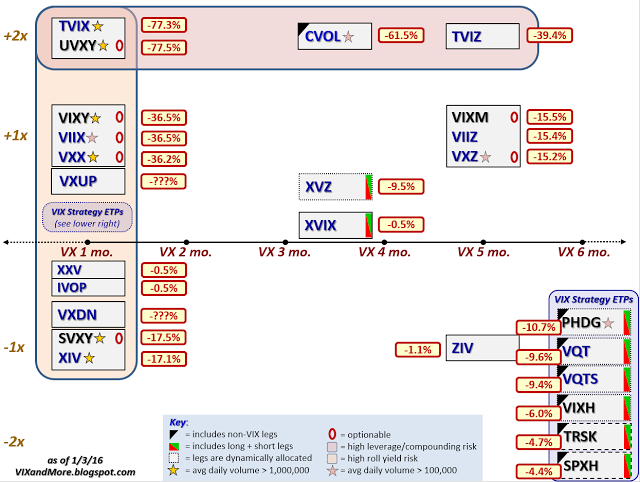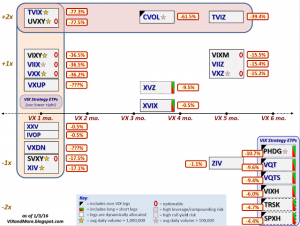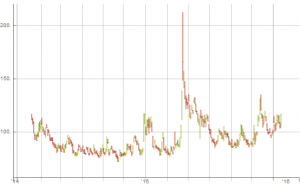The popular VIX blog Vix and More evaluates the performance of the VIX ETFs (actually ETNs) and concludes that all of them lost money in 2015. Yes, both long volatility and short volatility products lost money!
Source: Vix and More
By contrast, our Volatility ETF strategy had an exceptional year in 2015, making money in every month but one:
How to Profit in a Down Market
How do you make money when every product you are trading loses money? Obviously you have to short one or more of them. But that can be a very dangerous thing to do, especially in a product like the VIX ETNs. Volatility itself is very volatile – it has an annual volatility (the volatility of volatility, or VVIX) that averages around 100% and which reached a record high of 212% in August 2015.
The CBOE VVIX Index
Selling products based on such a volatile instrument can be extremely hazardous – even in a downtrend: the counter-trends are often extremely violent, making a short position challenging to maintain.
Relative value trading is a more conservative approach to the problem. Here, rather than trading a single product you trade a pair, or basket of them. Your bet is that the ETFs (or stocks) you are long will outperform the ETFs you are short. Even if your favored ETFs declines, you can still make money if the ETFs you short declines even more.
This is the basis for the original concept of hedge funds, as envisaged by Alfred Jones in the 1940’s, and underpins the most popular hedge fund strategy, equity long-short. But what works successfully in equities can equally be applied to other markets, including volatility. In fact, I have argued elsewhere that the relative value (long/short) concept works even better in volatility markets, chiefly because the correlations between volatility processes tend to be higher than the correlations between the underlying asset processes (see The Case for Volatility as an Asset Class).



